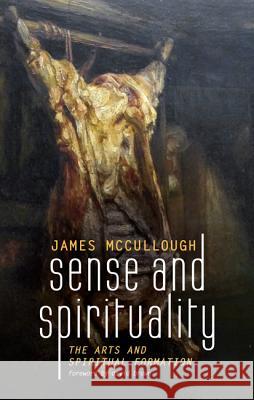Sense and Spirituality: The Arts and Spiritual Formation » książka
Sense and Spirituality: The Arts and Spiritual Formation
ISBN-13: 9781625649218 / Angielski / Miękka / 2015 / 146 str.
Sense and Spirituality: The Arts and Spiritual Formation
ISBN-13: 9781625649218 / Angielski / Miękka / 2015 / 146 str.
(netto: 79,64 VAT: 5%)
Najniższa cena z 30 dni: 83,39
ok. 16-18 dni roboczych
Dostawa w 2026 r.
Darmowa dostawa!
There is growing interest in the relationship between the arts and Christian faith. Much has been written about the arts and theology and the place of the arts in church life. Not as much has been written, however, about how the arts might actually advance spiritual formation in terms of the cumulative effect of religious experience and intentional practices. This book provides a modest step forward in that conversation, a conversation between theological aesthetics and practical theology. Understanding aesthetics as ""the realm of sense perception"" and spiritual formation as ""growing capacities to participate in God's purposes,"" James McCullough suggests how these dynamics can mutually enhance each other, with the arts as an effective catalyst for this relationship. McCullough proposes an analysis of artistic communication and explores exciting examples from music, poetry, and painting, which render theoretical proposals in concrete terms. This book will engage both those new to the arts and those already deeply familiar with them. ""What is art? How is it formed? What does it do? Does it, or can it, illuminate, animate, express, and catalyze spirituality--the perception and experience of the presence of God? McCullough answers all these questions, but explains as well how each person who understands the answers will have much to do--much attention, much contemplation, much silence. Indeed, McCullough plumbs the depth of puzzlement of the arts and the wonderful enlightenment of spirituality."" --James W. Sire, former editor of InterVarsity Press ""Just as Martin Thornton and Diogenes Allen rediscovered theology's inherent relation to Christian spirituality, so James McCullough here does the same for the theology and art conversation. Heeding T. S. Eliot's call to transform 'esthetic sensibility . . . into spiritual perception, and spiritual perception . . . into esthetic sensibility, ' McCullough deftly calls attention to the elephant in the aesthetics seminar room: the way that art catalyzes spiritual growth."" --Matthew Milliner, Associate Professor of Art, Wheaton College James McCullough is an adjunct instructor at Lindenwood University and a candidate for holy orders in the Episcopal Diocese of Missouri. He has published articles on the music of Anton Bruckner as well as on the art of Graham Sutherland and Makoto Fujimura.
There is growing interest in the relationship between the arts and Christian faith. Much has been written about the arts and theology and the place of the arts in church life. Not as much has been written, however, about how the arts might actually advance spiritual formation in terms of the cumulative effect of religious experience and intentional practices. This book provides a modest step forward in that conversation, a conversation between theological aesthetics and practical theology. Understanding aesthetics as ""the realm of sense perception"" and spiritual formation as ""growing capacities to participate in Gods purposes,"" James McCullough suggests how these dynamics can mutually enhance each other, with the arts as an effective catalyst for this relationship. McCullough proposes an analysis of artistic communication and explores exciting examples from music, poetry, and painting, which render theoretical proposals in concrete terms. This book will engage both those new to the arts and those already deeply familiar with them.""What is art? How is it formed? What does it do? Does it, or can it, illuminate, animate, express, and catalyze spirituality--the perception and experience of the presence of God? McCullough answers all these questions, but explains as well how each person who understands the answers will have much to do--much attention, much contemplation, much silence. Indeed, McCullough plumbs the depth of puzzlement of the arts and the wonderful enlightenment of spirituality.""--James W. Sire, former editor of InterVarsity Press ""Just as Martin Thornton and Diogenes Allen rediscovered theologys inherent relation to Christian spirituality, so James McCullough here does the same for the theology and art conversation. Heeding T. S. Eliots call to transform esthetic sensibility . . . into spiritual perception, and spiritual perception . . . into esthetic sensibility, McCullough deftly calls attention to the elephant in the aesthetics seminar room: the way that art catalyzes spiritual growth.""--Matthew Milliner, Associate Professor of Art, Wheaton CollegeJames McCullough is an adjunct instructor at Lindenwood University and a candidate for holy orders in the Episcopal Diocese of Missouri. He has published articles on the music of Anton Bruckner as well as on the art of Graham Sutherland and Makoto Fujimura.











